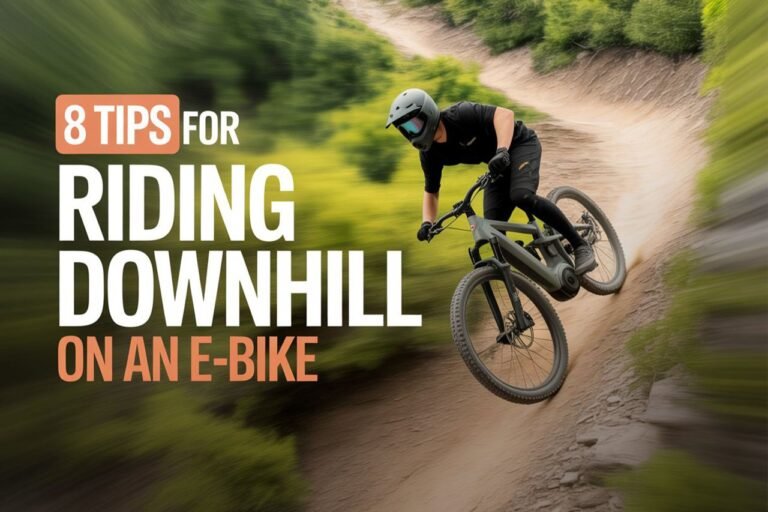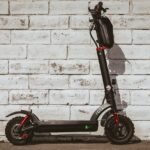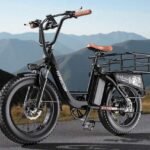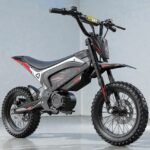
Ever wondered how to bypass the speed limiter on an e-bike for a more thrilling ride? You’re in the right place! This guide is all about understanding how you can make your electric bike go faster and what it means for your riding experience.
Removing or adjusting the speed limiter on an e-bike typically involves accessing the bike’s settings or modifying its hardware. While these methods can potentially increase speed, they may also affect the bike’s safety features and void your warranty. It’s important to act with caution and consider the possible legal implications.
This article will cover various techniques used to alter speed limiters on electric bikes. It will also delve into the important aspects of safety and legality, ensuring that you make informed decisions without compromising your riding experience.
Understanding Your E-Bike’s Speed Limiter
Electric bikes often come with speed limiters to control how fast they can go. These limiters are important for safety but can feel restricting for adventurous riders. Let’s explore what speed limiters are and how they work.
What is a Speed Limiter?
A speed limiter is a device that prevents an e-bike from exceeding a specific speed. This ensures safety and helps comply with local regulations. Most e-bikes are limited to around 20-28 mph (32-45 km/h), depending on the country.
Speed limiters work by regulating power delivery to the motor. This can be through sensors or built-in software. Benefits include:
- Safety: Prevents accidents by keeping speeds manageable.
- Legal compliance: Meets transport and road laws in many areas.
Understanding speed limiters helps riders make informed choices about their biking experiences.
The E-Bike’s Max Speed: Safety or Shackles?
The maximum speed of an e-bike is both a safety feature and a legal requirement in many places. For some riders, these limits can seem more like shackles, holding back the thrill of fast rides.
Pros of Speed Limiting:
- Safety: Lower speeds reduce risk of injury in accidents.
- Battery Efficiency: Longer rides due to controlled power usage.
Cons for Enthusiasts:
- Frustration: Restricts adrenaline-fueled experiences.
- Reduced Use: Some might use the e-bike less frequently.
While limitations exist, they are crucial for ensuring safe and enjoyable biking on shared paths and roads.
How Speed Limiters Work in Electric Bikes
Speed limiters operate using sensors and electronic controls. They track your speed and cut motor power when you hit the limit. Understanding their operation can be useful.
Main Components:
- Sensors: Detect wheel or pedal speed.
- Controller: Manages how much power reaches the motor.
These systems are often adjustable but tampering can void warranties or break local laws. Many enthusiasts seek ways to remove or modify these limiters, but this can have legal or warranty implications.
Knowing this helps balance thrill with safety and legality when considering modifications.
The Legal Landscape: Staying on the Right Side of the Law
Speed limiter removal from e-bikes can have significant legal effects, depending on local traffic laws and regulations. Knowing what these laws entail and how they impact the status of your e-bike is crucial. This ensures that riders make informed decisions and avoid potential legal issues.
Traffic Laws and E-Bike Regulations
Traffic laws for e-bikes can vary significantly by region. In some areas, e-bikes with removed speed limiters may be classified differently, possibly requiring registration or a driver’s license. It’s essential to research and understand the specific laws in your area.
Some regions classify e-bikes based on their maximum speed and motor power. Removing the speed limiter could change the classification of the e-bike to a different vehicle category, thus affecting the rules that apply.
- Local Regulation Examples:
- USA: Many states classify e-bikes under 28 mph separately from other motor vehicles.
- EU: The limit is often set at 15.5 mph for pedal-assist before it’s categorized differently.
Understanding these distinctions can help riders decide whether altering their e-bike is worth the potential hassle.
Impact of Speed Limiter Removal on Legal Status
Removing the speed limiter can change the legal status of an e-bike. It may transform it into a motor vehicle that requires different compliance measures. This could include mandatory insurance, registration, and adherence to motor vehicle traffic laws.
Failing to comply can lead to fines or other legal penalties. For example, if an e-bike exceeds the local speed cap set by law, its rider could face penalties similar to those for riding an unregistered vehicle.
It’s crucial for riders to weigh these potential legal implications against the desire for increased speed. Making informed choices helps ensure they stay within legal boundaries and continue to enjoy riding their e-bikes safely.
Safety First: What You Need to Know
When bypassing a speed limiter on an e-bike, safety is the top priority. Understanding the potential risks and essential safety measures can help prevent accidents.
Potential Risks of Tweaking the Speed Limiter
Messing with the speed limiter can turn your peaceful ride into a wild adventure, but it’s not all fun and games. The first risk is losing control, as higher speeds make it harder to navigate obstacles and terrain. It increases the chances of accidents, especially for inexperienced riders.
Faster speeds can also lead to quicker wear and tear on your bike’s components. Brakes and tires, not designed for high speeds, might fail when you need them most. This can lead to dangerous malfunctions.
Legally, bypassing the limiter might put you at odds with local laws. Many places have strict regulations on e-bike speeds for everyone’s safety. Breaking these laws could result in fines or more severe penalties. Always check the regulations in your area before making modifications.
Mandatory Safety Measures to Consider
Before you channel your inner speed demon, take some steps to stay safe. Always wear a helmet and consider additional protective gear like gloves and knee pads. These can be lifesavers in case of an accident, so don’t skip them.
Regular maintenance is essential. Check your brakes and tires frequently to ensure they can handle higher speeds. Upgrade them if necessary to avoid unexpected failures.
Finally, ride with caution. Even if you’ve increased speed, it doesn’t mean you should use it at all times. Pay attention to road conditions and traffic, and ride in safe areas. Never forget that your safety and that of others should always come first.
Tools of the Trade: What You Need to Get Started
Exploring how to bypass the speed limiter on an e-bike can be quite interesting. It involves understanding specific tools and components that play a critical role in the process. This includes things like diagnostic devices, the pedal bracket, and specialized e-bike tool kits.
Essential Tools and Diagnostic Devices
Before jumping into any adjustments on an e-bike, one must arm themselves with the right tools. Basic hand tools like screwdrivers and wrenches are a good start. Multimeters are crucial for checking voltage and ensuring everything is powered correctly.
Another handy device is a diagnostic tool. It helps in identifying any electronic issues that might crop up during the process. Cable ties and cutters can also prove useful when dealing with wires and cables, keeping everything neat and tidy.
Understanding the Role of the Pedal Bracket
The pedal bracket, also known as the bottom bracket, is essential in the bike’s mechanics. It’s the component where the crank arms connect to the bike frame. In some cases, modifications might be made here to ease the removal of speed restrictions.
Understanding its role in maintaining pedal efficiency and overall bike balance is crucial. If any adjustments occur here, care should be taken to ensure the bike remains stable and safe to ride.
Specialized E-Bike Tool Kits
E-bike tool kits are specialized sets designed specifically for electric bikes. These kits often include key items like torque wrenches, useful for adjusting and securing fasteners without damaging components.
Some kits also come with spoke wrenches, useful for maintaining wheel integrity after adjustments. The inclusion of hex keys in different sizes is typically necessary for tackling a variety of fixings and bolts found on the bike.
Having a comprehensive toolkit not only makes the modification process smoother but also ensures that the bike can be reassembled with precision, maintaining safety and functionality for future rides.
Methods to Modify: Different Ways to Bypass the Speed Limiter
Speed limiters on e-bikes often cap how fast you can go. Riders look for ways to remove these limits, which can involve different tools and techniques. These methods usually involve tech gadgets or tricks with the e-bike’s system.
Speedbox Installation: A Quick Fix?
Speedbox is popular among those looking to remove speed limit restrictions. It’s a tiny device that tricks the e-bike’s sensor, allowing it to surpass the speed cap without breaking a sweat.
Installation is simple. Connect the Speedbox to the sensor wire. Most devices come with clear instructions. This method doesn’t require much e-bike knowledge, making it ideal for beginners.
While using Speedbox increases your speed, it might affect the e-bike’s warranty. Riders should weigh the thrill of speed against potential warranty issues. Check local laws, too, as modifying speed can be illegal in some areas.
Peartune and Other Tuning Devices
Peartune is another gadget that assists in bypassing speed restrictions. It works similarly to Speedbox by tweaking the sensor readings. Install the device between the sensor and motor.
Peartune is straightforward to use and known for its reliable performance. Users report noticeable changes in speed right after installation. It is ideal for those who love tech gadgets and improvements.
Other tuning devices also offer similar benefits. They come in different brands and prices. Key features:
- Easy to install
- Variety of options
- Noticeable speed improvement
As with any modification, users should be cautious about legal implications and warranty conditions.
Software Solutions vs. Hardware Hacks
Software solutions often involve using apps or codes to alter speed settings digitally. Some e-bike systems can be hacked through their software, offering a stealthier approach.
Hardware hacks include directly modifying parts of the e-bike, like the throttle system. It requires more skill but can give a greater boost to speed capabilities.
Comparing both, software methods maintain the bike’s hardware integrity, which might be safer in some regards. Hardware hacks, though potent, risk damaging the e-bike or voiding warranties.
The decision between software and hardware depends on one’s tech expertise and willingness to handle risks.
Brand-Specific Adjustment: Bosch, Shimano, and Bafang
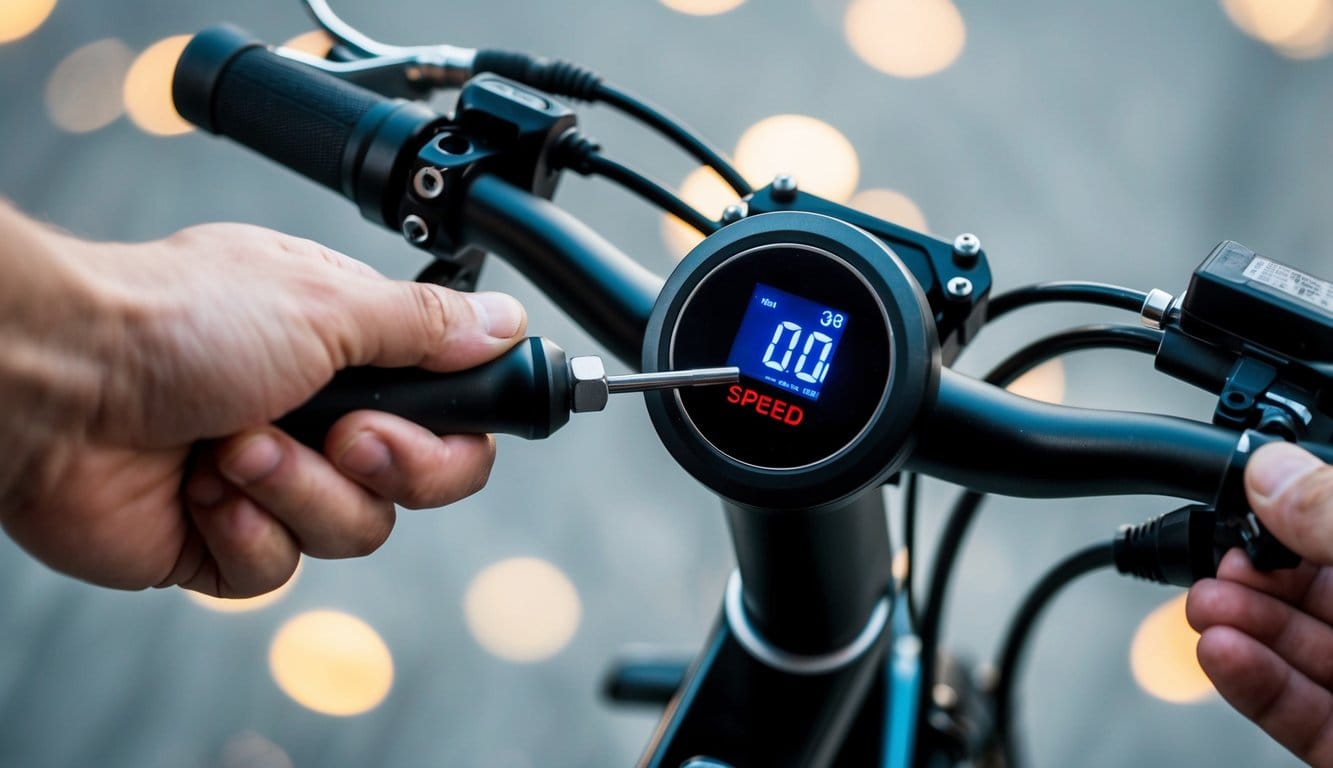
Tweaking the speed limiter on your e-bike will depend on the brand, as each has its own tricks. Bosch, Shimano, and Bafang are popular brands, and each requires a unique approach to make adjustments safely and effectively. Let’s explore how to tweak each one.
Tweaking the Bosch Motor Speed Limiter
Bosch motors are known for their reliability. Adjusting the speed limiter involves some safety checks. It’s important to note that tampering with your e-bike may void warranties or even violate local laws, so check the regulations in your area.
To adjust the Bosch motor, follow these steps:
- Access the Display Panel: Check the user manual to understand the panel controls.
- Deactivate Safety Limits: Use the settings to adjust the speed limit.
- Tools: Bosch requires special software and cables.
For more detailed guidance, Bosch offers official support that can be accessed online. Always remember, riding faster means you need to be more vigilant on the road!
Shimano Systems: Navigating the Nuances
Shimano systems can be tricky due to their integrated design. They often have a built-in speed limiter that kicks in at a pre-set speed. Here’s a simple way to adjust:
- Settings Menu: Dive into the settings menu on the e-bike display.
- Adjustment Options: Locate options related to speed limitations.
- Use Certified Tools: Special tools might be needed for software changes.
If these steps seem difficult, Shimano e-bikes might need professional modifications. Saving time by getting expert help can ensure you’re not caught in a frustrating process.
Bafang Motors: Tips and Tricks
Bafang motors are popular among DIY enthusiasts due to their flexibility. Adjusting the speed limiter can be a hands-on adventure. Be cautious to ensure all adjustments are done properly.
- Basic Tools: A basic toolkit is often enough.
- Display Settings: Access the screen settings and modify motor limits.
- Community Support: Explore forums like Electric Bike Forums for tips from other users.
This process invites a bit of experimentation, but don’t forget to prioritize safety! Speed may be thrilling, but it’s always important to follow regulations and ride responsibly.
Before and After: Maintenance and Performance
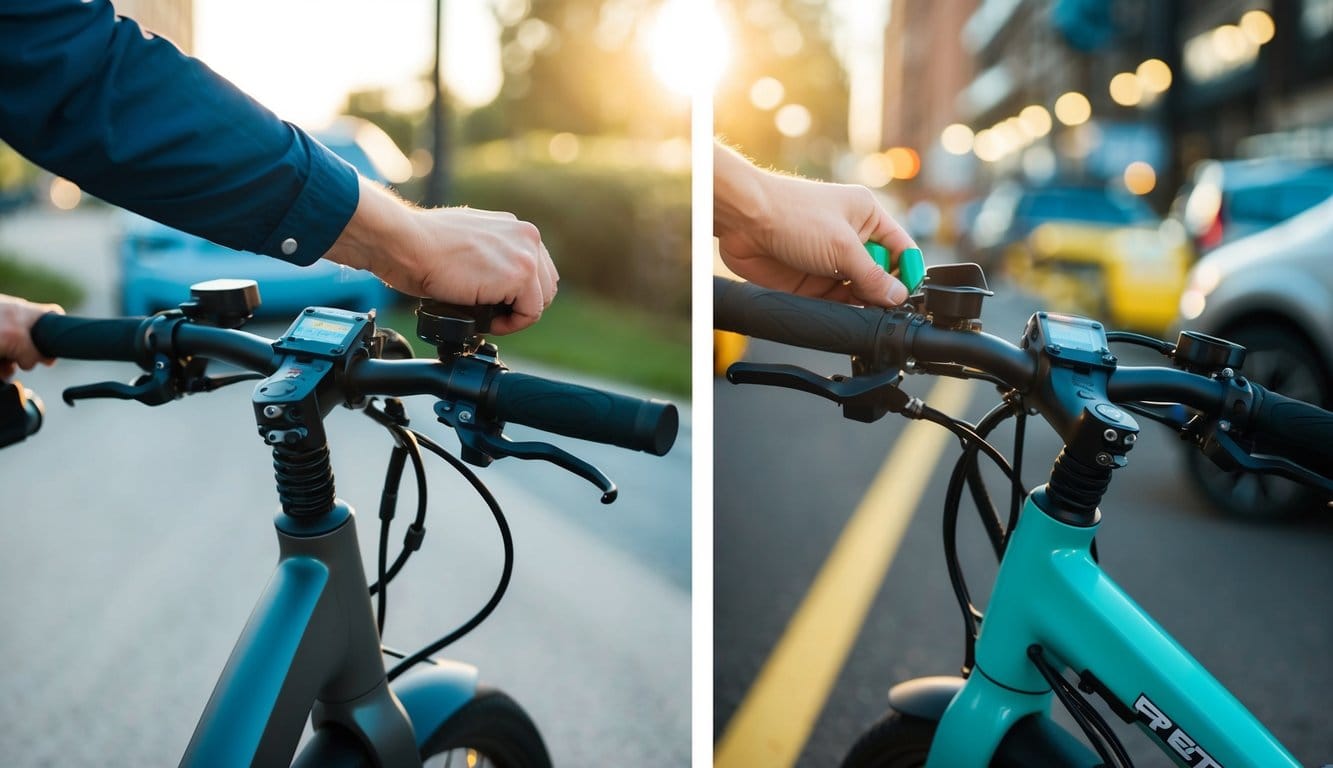
Removing the speed limiter on an e-bike can change how it performs and how often it needs upkeep. This can impact battery life and speed, requiring careful maintenance to ensure performance stays top-notch.
Boosting Your E-Bike Battery Life Post-Limiter Removal
Once the speed limiter is gone, the motor might draw more power, affecting battery life. To counter this, consider using pedal-assist mode more often to save charge. Regularly charge your battery and avoid letting it deplete fully. Maintaining correct tire pressure reduces rolling resistance, which can also save battery life. If possible, opt for a high-capacity battery. High-quality batteries offer greater range, ensuring you can enjoy faster rides without frequent stops to recharge.
Pro Tips for E-Bike Maintenance
Keeping your e-bike in top shape is important, especially after making modifications. Start with regular tune-ups every few months. Check the brakes, gears, and tires for wear and tear. Keep the chain clean and properly lubricated to ensure smooth rides. If there are complex changes, don’t hesitate to seek professional help. Mechanics can spot issues early, preventing costly repairs. Pay special attention to the motor and electrical components to avoid malfunctions.
Measuring Performance Gains
Checking performance improvements means looking at a few key factors. Consider using a speedometer app to track your speed pre- and post-modification. Creating a simple table helps compare data:
| Before | After |
|---|---|
| Top Speed | Top Speed |
| Average Speed | Average Speed |
Keep note of the ride duration to ensure battery life remains consistent. You can also test on the same routes to compare e-bike speed and endurance against previous benchmarks. This helps in understanding if changes improved performance or need further adjustments.
A Balanced View: Weighing Pros and Cons
When it comes to bypassing the speed limiter on an e-bike, there are a variety of factors to consider. It’s much like deciding whether to add extra hot sauce to your already spicy burrito—it might be thrilling, but it could also have consequences.
Pros
- Improved Performance: Without a speed limiter, your e-bike can go faster, getting you to your destination quicker and with a little more wind in your hair.
- Enhanced Riding Experience: Faster speeds can make your daily commute or weekend ride more exciting and engaging.
Cons
- Safety Risks: Riding at higher speeds can be more dangerous. It’s crucial to have safety gear and remain alert.
- Legal Implications: Many places have laws about e-bike speeds. Speeding can lead to fines or worse.
- Maintenance Issues: More speed can mean more wear and tear on your bike, possibly leading to frequent repairs.
Here’s a quick comparison to help you decide:
| Aspect | Pros | Cons |
|---|---|---|
| Performance | Faster travel, thrilling ride | Increased wear on bike components |
| Safety | – | Higher risk of accidents |
| Legal | – | Potential fines or legal trouble |
Keeping these points in mind can help make a well-informed decision. They need to weigh the thrill against the potential risks.
The Step-by-Step Guide: How to Remove Your E-Bike’s Speed Limiter
Adjusting your e-bike involves taking steps to remove the speed limiter, which can enhance your riding experience. Key points include preparation, methodical removal of the limiter, and subsequent testing.
Preparation and Precautions
Before starting, ensure you have the necessary tools, such as wrenches, screwdrivers, and possibly a tuning chip. It’s crucial to make a safety checklist. Make sure your battery is disconnected to avoid any electrical shocks or unexpected power-ups while working on the bike.
Wear gloves for personal safety and read your e-bike’s manual for any brand-specific guidelines. This will also help identify where the speed limiter is located. Working in a well-lit, spacious area will make the process smoother.
Remember, removing the speed limiter might void your warranty. Check the laws in your area regarding modified e-bikes to ensure compliance before proceeding.
Detailed Guide for Removing the Speed Limiter
Find the speed limiter wire, a small cable connecting the motor to the bike’s main controls. The wire’s color and location can differ depending on the make and model, so consult your e-bike’s manual.
- Disconnect the power.
- Unplug the speed limiter wire.
- Attach a tuning kit or chip if necessary. Some models might require this step for optimal performance. Electric Bike Speed Limiter Removal.
Reassemble any parts you’ve removed, ensuring all connections are secure. Double-check each step to avoid any mishaps later on. This meticulous approach ensures everything runs smoothly once you power up the bike again.
Post-Modification: Testing and Calibration
After modification, it’s time to test your e-bike in a safe, open area. Pay attention to the bike’s acceleration and responsiveness. It might take a few adjustments to get everything calibrated just right.
Make a list of performance aspects to check, such as motor sound and battery usage. If problems arise, revisit the connections to ensure they are intact. Enjoy the new speed capabilities responsibly.
Remember to monitor battery life closely as modifications might affect efficiency. Riding too fast could result in shorter battery runs, so it’s wise to assess and adapt your riding habits accordingly.
Embracing the Trails: Where to Test Your Unleashed E-Bike
Taking your ebike off the beaten path is a thrill like no other. When it’s time to give your unleashed e-bike a whirl, a few trails can offer that perfect blend of nature and adventure.
1. National Parks and Forests: Many offer biking trails. Not only do you get great scenery, but often a mix of challenging terrains.
2. Local Trails: Look for bike-friendly parks or designated biking paths in your area. They’re awesome for quick test rides without venturing too far from home.
3. Designated Mountain Biking Trails: These trails provide varying levels of difficulty and are often well-maintained, providing a fun ride for all.
Top Tips for Hitting the Trails
- Wear Safety Gear: Always wear a helmet. Pads and gloves are also your friends on rough trails.
- Check Local Laws: Make sure e-bikes are allowed on the trails you choose.
- Pack Essentials: Bring water, a small repair kit, and maybe a snack. Nothing worse than being stranded hungry on a trail!
Bold Moves on an E-Bike: Embracing the trails with your powerful electric bicycle is a fresh breath of freedom. From smooth rides through a park to tackling steep mountain inclines, it’s an experience that brings joy and a sense of adventure.

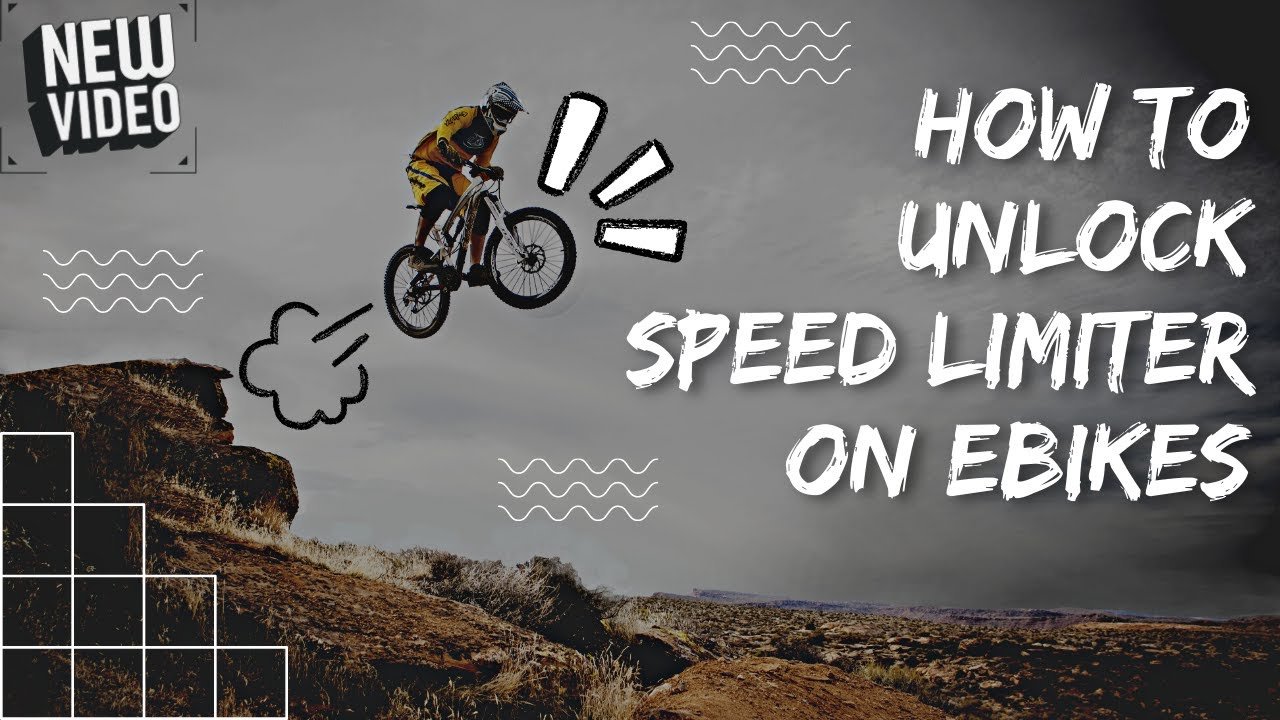
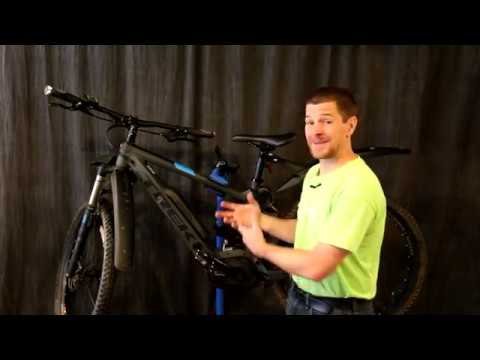
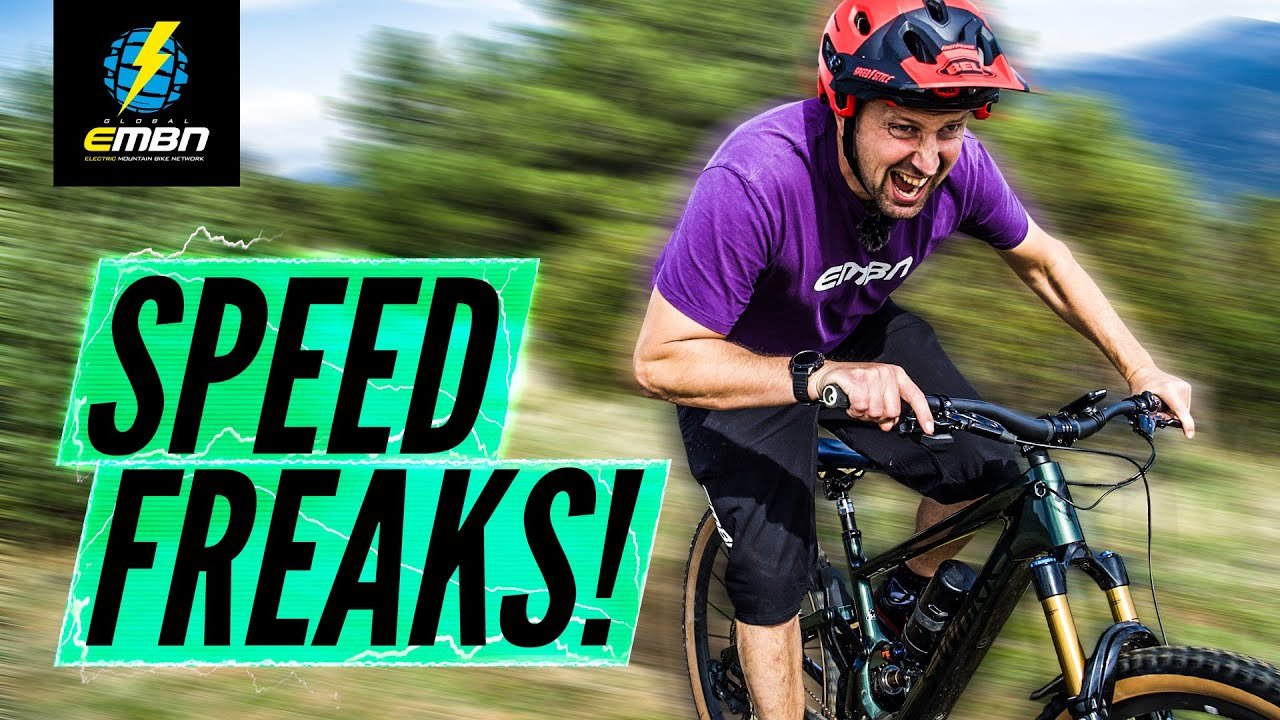
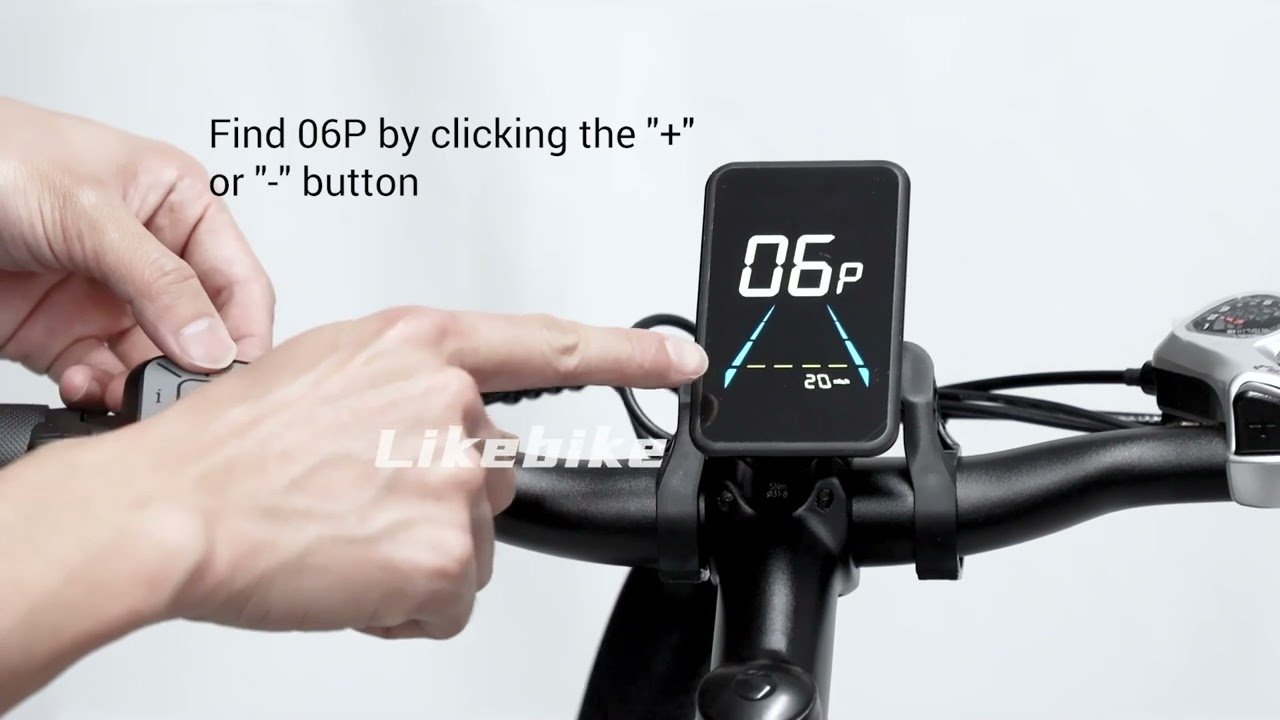


![How to Reset Your Electric Bike Battery: A Complete Guide ([year]) How to Reset Electric Bike Battery?](https://goebikelife.com/wp-content/uploads/2025/05/How-to-Reset-Electric-Bike-Battery-768x512.jpg)
